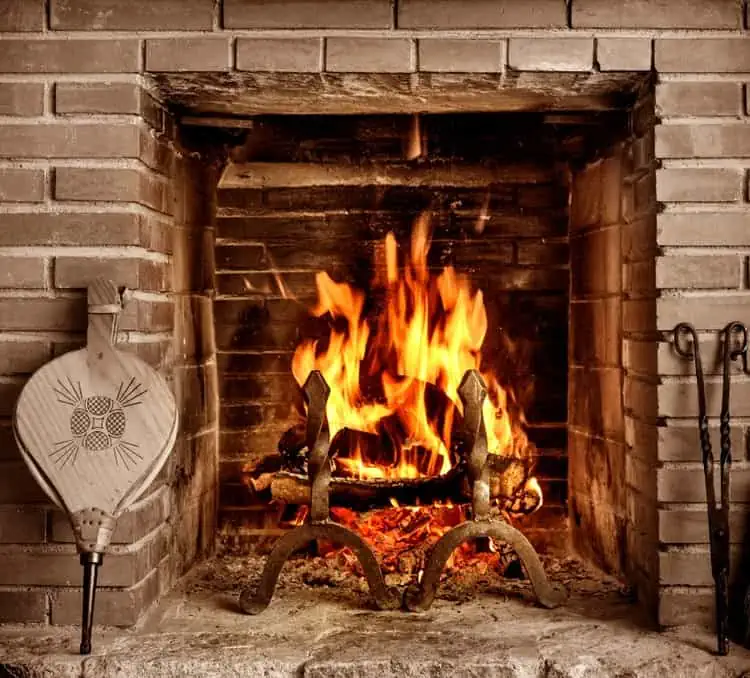The primary purpose of a fireplace is to maintain the combustion of wood into heat and draft out harmful gases and smoke out of the building. Smoke travels through the chimney to the outside air, instead of inside the home. When a good draft is not present, a low draft allows carbon monoxide, soot, and smoke to permeate. A good draft is necessary to keep a fire burning. This allows oxygen to continuously get to the fire, and smoke to dispel through the flue, and out the chimney. Knowing how a draft problem starts is an easy way to solve the issue.
Structural and Fire Code
An improper draft is typically able to be noticed. You can spot a draft problem by inspecting the masonry. If the façade, front of the fireplace, hearth, or hearth extension is layered with an unusual amount of soot; you may have a drafting problem. A fireplace with an incorrect design may be the culprit. The flue, which is a ceramic-lined passageway that is inside the chimney could not be proportionate to the firebox. An incorrect design is, unfortunately, a common occurrence in fireplace masonry, in which fire codes are ignored in the building process. Therefore, it is so important to hire a professional. If a chimney is not tall enough it will not draft properly. A taller chimney will draft air better than a shorter one. Chimney sweep technicians can extend a chimney by adding masonry to increase the height. Have you checked your lockbox or damper opening? If you have not burned a fire all season, and you go to light your first fire of the year and it is not drafting properly. Sometimes fixing a draft issue is as easy as opening your lockbox or damper. If they are closed, it will not allow smoke to reach the flue. Another common issue is if the firebox is too shallow, or too deep, smoke will not properly draft.
Wood and Fuel
Unseasoned wood, greenwood, or the wrong type of wood can cause drafting issues by producing too much smoke. As mentioned in our previous blog “Wood-Burning Tips” we discussed how important it is to use the right fuel for your fire. Wood must season for one year to dry before it can be burned. For optimal use, seasoned wood must also be split and stacked in a way that oxygen can reach all parts of the fire. A helpful tip is to push the logs as far back to the hearth as you can. This will give the smoke from the fire less of a chance to draft out of the hearth into the home, and through the chimney.
Blockages
Blockages in the chimney will not allow the smoke to exit the chimney through the flue. If the blockage is big enough, it will push smoke downwards if it does not escape fast enough. Large amounts of creosote, which is a hardened form of soot, can line the flue. Creosote is dangerous and should be removed immediately. It is a highly flammable material that is toxic to humans. It is the leading cause for chimney fires every year and can accumulate quickly if you do not have your chimney swept regularly. Birds, bats, raccoons, and other animals can block your chimney as well! It is more common than you think, a chimney is a perfect place for shelter for small animals. We are familiar with this issue, as many chimney sweeps are, and we practice humane animal removal. Animals in your chimney can create a nest that can damage the structural integrity of your chimney. Droppings left by animals can accumulate in the firebox and cause respiratory health issues. If you have an animal or are hearing signs that you may have one, it is important to call a specialist as soon as possible. Chimneys are an easy way in, but many animals have a hard time escaping. Any blockages in your chimney can affect your draft heavily, but it can also become a part of the air you breathe. Chimney Sweeps remove blockages for you upon inspection.
Air Vents
In rare cases, the home itself can be causing a draft issue in your fireplace! A “mini-draft” could be happening because of an air vent, a fan, or air being allowed to escape somewhere other than the chimney. When a fire is burning inside a home, the air is pulled up through the chimney. This air must be replaced in the home with outside air. As smoke rises with heat, cool air is brought back in. If air is not allowed to refill the home, it can cause a smoke draft problem. Newer homes that are more air-tight do not allow adequate air to re-enter the house after combustion. A fresh air intake design can be installed in the fireplace which is a valve that allows smoke to leave the house properly.
Inspection
Finally, we have a downdraft, which can be the weather pushing down cold air into your chimney, pushing smoke into the home. You cannot control the weather, but a chimney sweep can help you fight it! Installing a chimney cap or chase cover can eliminate downdraft and the possibility of animals in your chimney. Since there are so many possible factors that could be the cause of a fireplace that is not drafting smoke correctly. Check the damper, the lockbox, and try using our tips to see if you can find the root of the problem. If you need an inspection, a chimney sweep professional can give you the help you need.

